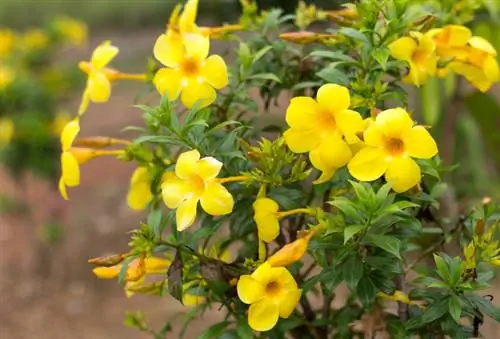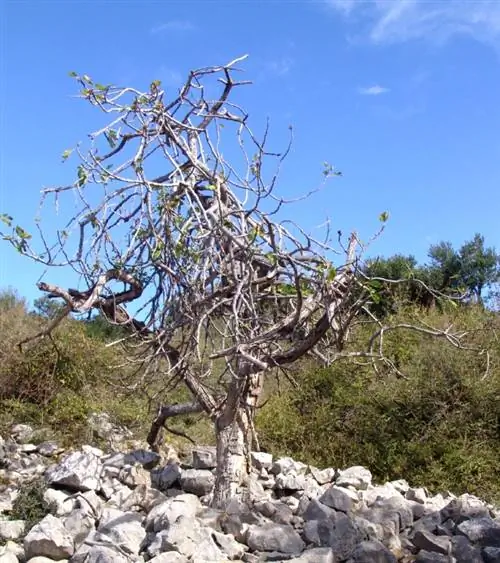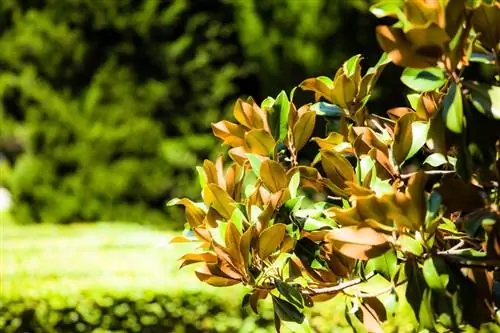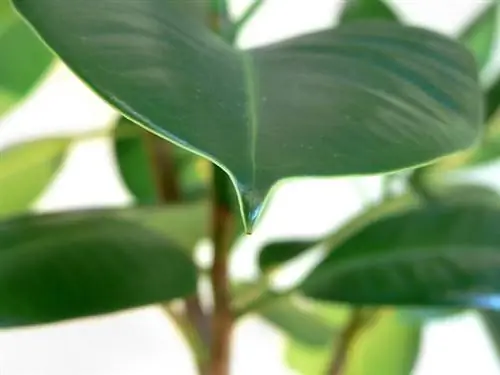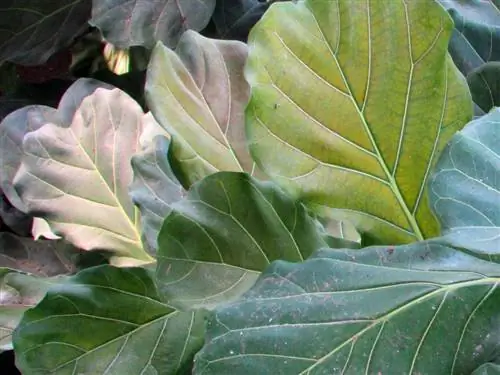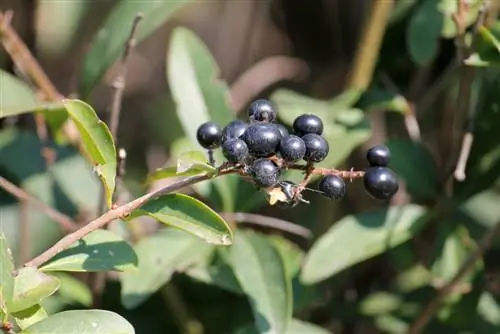- Author admin [email protected].
- Public 2023-12-16 16:46.
- Last modified 2025-01-23 11:20.
There are many different reasons why your Dipladenia turns brown leaves or even loses its leaves. There is not always a disease or pest infestation behind it. Sometimes this process is completely normal, at least if there are only a few leaves.
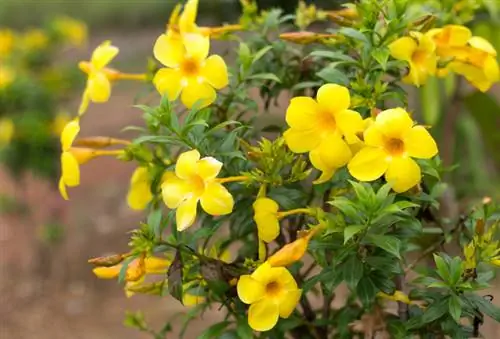
Why is my Dipladenia losing leaves and what can I do about it?
A Dipladenia loses leaves due to age, too much water or fertilizer, too little light or heat, pest infestation, plant diseases or incorrect winter quarters. Adjust care accordingly to save the plant.
As an evergreen plant, Dipladenia does not shed all of its leaves every fall, but old foliage still needs to be renewed from time to time. That's why some old leaves occasionally turn yellow and then fall off. As long as there aren't too many, you don't have to worry.
Why is my Dipladenia losing its leaves?
If your Dipladenia is losing leaves at the wrong time or too many at once, then you should definitely investigate the cause. Is your Mandevilla, as Dipladenia is also called, in the right location, i.e. bright and warm, or was it perhaps overwintered incorrectly? In winter the Dipladenia needs temperatures of around 8 °C to 15 °C and a bright place.
Check your Mandevilla regularly for pests such as spider mites or lice. These can also lead to discoloration and loss of leaves. The same applies to diseases that can occur particularly in an environment that is too humid.
What should I do if my Dipladenia loses leaves?
The Mandevilla may also react to too much water or fertilizer with discolored leaves. If you don't adapt your care quickly to your Dipladenia's needs, it will lose its leaves. It is best to replace completely soaked soil, then only water your Dipladenia moderately and avoid fertilizer for a few weeks. After that, fertilize about every 2 weeks, but not too much.
Reasons for discolored or falling leaves:
- the age of the leaves
- too much water or fertilizer
- too little light or heat
- an infestation of pests
- a plant disease
- wrong winter quarters
Tip
React immediately if your Dipladenia loses too many leaves at once, then you still have a good chance of saving your plant.

